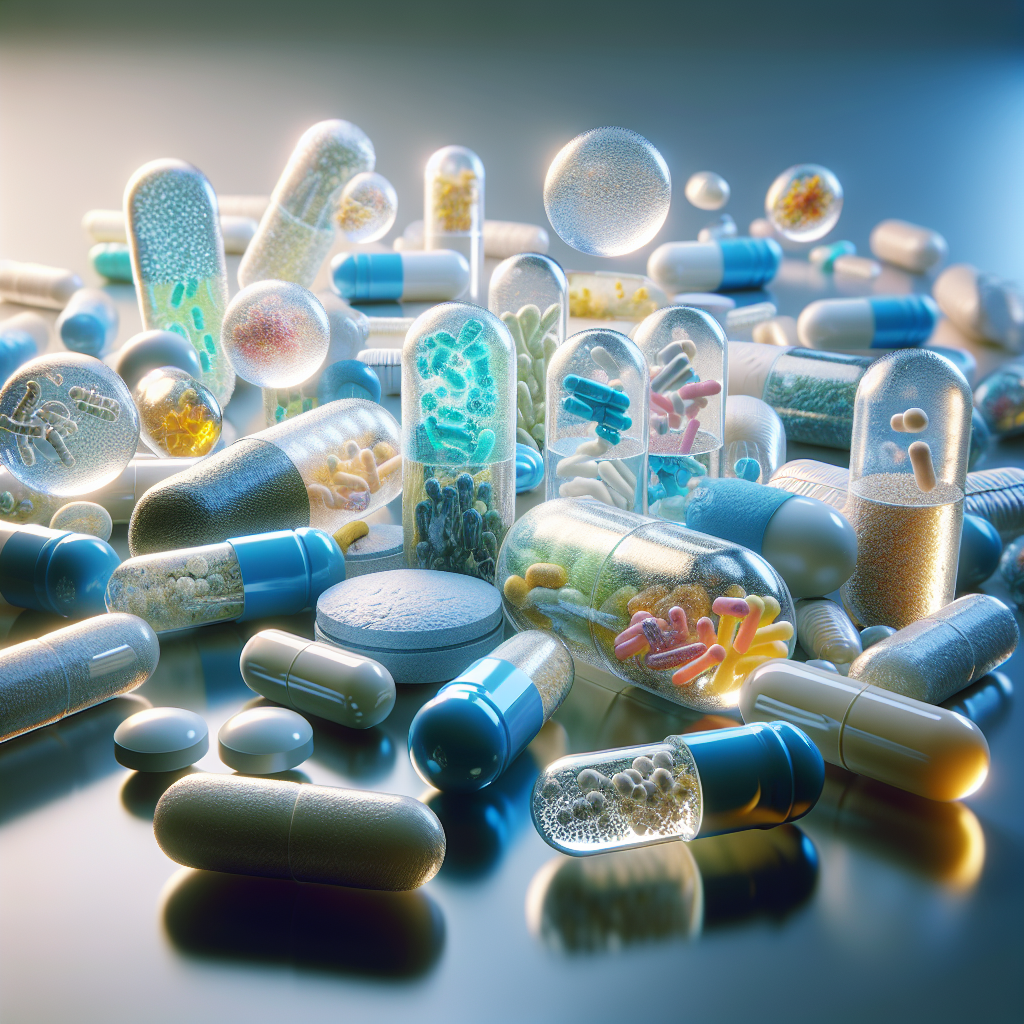Antibiotic-associated diarrhea (AAD) represents a significant medical concern, affecting up to 30% of patients undergoing antibiotic treatment. The disruption of the gut’s microbial balance by antibiotics is often the culprit behind this uncomfortable condition. However, evolving research suggests that probiotics—live microorganisms with health benefits—may play a pivotal role in mitigating this side effect. This article delves into how the strategic use of probiotics could influence the incidence and severity of AAD and improve overall Digestive Health.
Understanding Antibiotic-Associated Diarrhea
Antibiotics are powerful agents against bacterial infections, but their action is not always limited to harmful bacteria; they can also inadvertently eliminate beneficial gut flora. The resulting imbalance can lead to diarrhea, a common side effect of antibiotic therapy. AAD varies from mild to severe and can significantly impact a patient’s recovery and quality of life.
Probiotics come into play as a potential therapeutic ally. These beneficial bacteria or yeasts are found in various foods and supplements and can help restore the natural balance of gut microbiota.
Probiotics: The Friendly Forces
The primary mechanism by which probiotics exert their influence is through the restoration of the gut’s natural flora. By populating the gut with healthful bacteria, probiotics can help outcompete harmful pathogens, enhance immune function, and improve the intestinal barrier.
The most commonly referenced strains include Lactobacillus, Bifidobacterium, and Saccharomyces. These strains have been extensively studied for their health benefits, particularly in the context of AAD.
Clinical Evidence Supporting Probiotic Efficacy
Numerous studies have investigated the effectiveness of probiotics in preventing or reducing AAD. A systematic review published in the Journal of the American Medical Association found that probiotic administration was associated with a reduced risk of AAD. Patients who consumed probiotics alongside antibiotics were less likely to experience diarrhea compared to those who did not.
Other studies have echoed these findings, highlighting the potential of probiotics as a preventive measure. However, it’s critical to note that the efficacy can depend on the probiotic strains used, the dosage, and the patient’s health.
Choosing the Right Probiotic
Not all probiotics are created equal, and selecting the appropriate strain and formulation is essential. For instance, a meta-analysis published in the Lancet identified Saccharomyces boulardii and a mix of Lactobacillus strains as particularly effective against AAD.
When choosing a probiotic, consider the following:
- Strain specificity: Look for products that contain strains with evidence supporting their use in AAD.
- Viability: Ensure that the probiotic contains live cultures capable of surviving stomach acid to reach the gut.
- Dosage: Follow recommended guidelines or healthcare provider instructions, as potency can vary widely.
Integrating Probiotics with Diet
Incorporating probiotic-rich foods into the diet can also support gut health during antibiotic treatment. Foods such as yogurt, kefir, sauerkraut, and miso are natural sources of beneficial bacteria. Coupled with a balanced diet rich in fiber, these foods can help nourish and sustain a healthy gut microbiome.
Furthermore, understanding the Impact of Vegetarian Diets on Digestive Health and the Role of Diet and Lifestyle in Preventing Diverticulitis can offer additional insights into maintaining gut health through dietary choices.
Potential Limitations and Considerations
While probiotics show promise, they are not a one-size-fits-all solution. Some individuals may experience mild side effects from probiotic supplementation, such as bloating or gas. Additionally, those with compromised immune systems or severe illnesses should consult healthcare providers before starting probiotic therapy.
It’s also crucial to recognize that probiotics are not a substitute for antibiotics when treating bacterial infections. They should be viewed as a complementary approach to support gut health during and after antibiotic use.
Complementary Strategies
Beyond probiotics, other strategies can help support gut health during antibiotic therapy. Ensuring adequate hydration, consuming prebiotic foods that stimulate the growth of beneficial bacteria, and managing stress levels are all valuable approaches. Resources like the Advances in Probiotic Therapy for Digestive Disorders provide deeper insights into additional supportive therapies.
Broadening the Perspective on Gut Health
The significance of gut health extends beyond AAD. The gut microbiome plays a crucial role in overall well-being, influencing everything from immune function to mental health. Recognizing the Connection Between Gut Health and Chronic Fatigue is just one example of the far-reaching impact of a balanced gut microbiome.
External Resources
For those interested in further exploring the topic, here are some niche and specific resources:
- An academic paper on the role of Saccharomyces boulardii in AAD prevention.
- The World Gastroenterology Organisation Global Guidelines provide recommendations on probiotics and prebiotics.
- A clinical trial examining the impact of probiotics on the gut microbiota during antibiotic treatment.
Conclusion
The interplay between antibiotics and gut health is a delicate balance. Probiotics offer a promising avenue to support and restore this balance, potentially reducing the incidence of AAD. By selecting the right strains, incorporating probiotic-rich foods, and adopting complementary health strategies, individuals can navigate antibiotic treatment with greater ease and comfort.
As research continues to evolve, the potential applications of probiotics in digestive health and beyond will undoubtedly expand, offering new insights into the profound influence of our microbiome on overall health.



